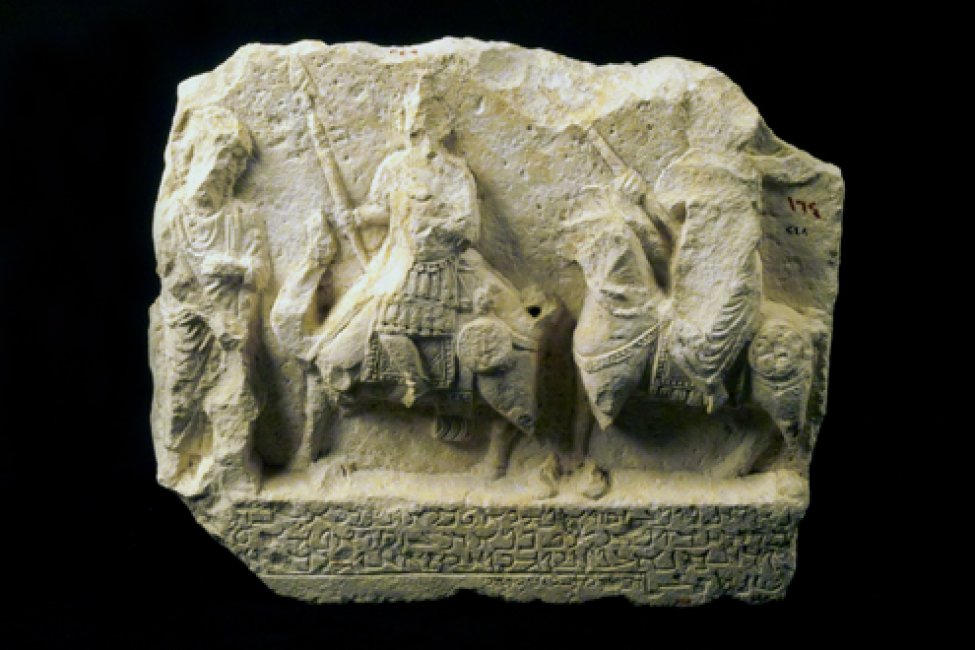
Shop Amazon - Create an Amazon Baby Registry
Carved Sculpture Panel with Armoured Camel Rider, Palmyra, 2nd century AD.
National Museum of Damascus, Syria



datation: 2nd century AD
provenance: Palmyra
area: Syria
period: 2nd Century AD
size: 55 cm x 48 cm
materials: Stone.
Palmyra is located at a distance of 243 km northeast of Damascus. It is a palm oasis in the middle of the Syrian Desert steppes. Palmyra rose as a prominent kingdom in the 1st century BC until the 3rd century AD. This kingdom played an important role in its strategic position between the Persian and the Roman empires. The leaders of Palmyra could develop their own economic prosperity and could also participate in the politics between the great powers of the period.
Palmyra had wide-spread trade connections reaching various regions of the ancient world.
The finds discovered in Palmyra’s tombs reveal international commerce. Similarly, a grave of a Palmyrene merchant has been discovered in as far away as the Roman ruins of England, indicating travel from the eastern-most point of the Roman Empire to its furthest Western extent. When it comes to pictorially representing Palmyra, the images of horses and camels laden with goods are often a prominent feature.
In this stone panel of high relief sculpture, we see a young Palmyrean man placing ritual sacrifices in front of the altar. Behind him, there is a camel rider and a horseback rider coming toward him and holding a spear and a shield. The base of the scene is inscribed with Palmyrean Aramaic epigraphy.
Source: UNESCO